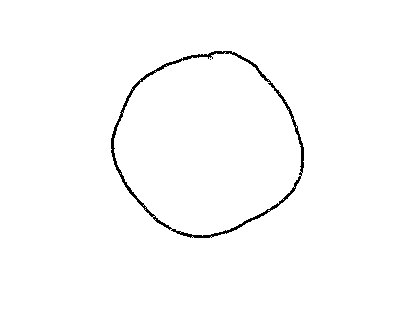Circle: Difference between revisions
No edit summary |
(→Notes) |
||
| Line 7: | Line 7: | ||
=== Circles === | === Circles === | ||
[[File:Circle.png|thumb|Figure 1: A circle. ]] | [[File:Circle.png|thumb|Figure 1: A circle. ]] | ||
An example of circle can be seen in figure (1). | An example of circle can be seen in figure (1).<ref name=":0" group="note" /> | ||
=== Non-circles === | === Non-circles === | ||
| Line 15: | Line 15: | ||
In standard mathematics, a circle means a ''perfect'' circle. A perfect circle is like a circle, except that it is supposed to lie in a perfectly flat and infinitely thin plane, the curve of the circle is supposed to have no width, and distance from the circle to its center is supposed to be perfectly uniform. | In standard mathematics, a circle means a ''perfect'' circle. A perfect circle is like a circle, except that it is supposed to lie in a perfectly flat and infinitely thin plane, the curve of the circle is supposed to have no width, and distance from the circle to its center is supposed to be perfectly uniform. | ||
Although standard mathematicians commonly describe things like figure (1) as circles (because it's ''practical''!!), if they are being careful then they will say figure (1) is technically not a circle, but rather an imperfect representation of a circle. It is imperfect because it has nonzero thickness, and because its distance from its center is not uniform. By contrast, Objective Mathematics says that figure (1) literally ''is'' a circle.<ref group="note">Whether or not figure (1) is deemed a circle depends on context. In our present context, where we are | Although standard mathematicians commonly describe things like figure (1) as circles (because it's ''practical''!!), if they are being careful then they will say figure (1) is technically not a circle, but rather an imperfect representation of a circle. It is imperfect because it has nonzero thickness, and because its distance from its center is not uniform. By contrast, Objective Mathematics says that figure (1) literally ''is'' a circle.<ref group="note" name=":0">Whether or not figure (1) is deemed a circle depends on context. In our present context, where we are learning about math concepts, it is reasonable to identify it as a circle. If the context was that we were drawing a sketch of the moon, it would also be reasonable to identify it as a circle. If the context was that we were designing the blueprint for a precision scientific instrument, it would ''not'' be reasonable to identify it as a circle. </ref> | ||
== Notes == | == Notes == | ||
<references group="note" /> | <references group="note" /> | ||
Revision as of 23:55, 20 January 2024
A circle is a closed curve on a plane, which is equidistant from a point. A circle should be distinguished from the closely related concept of a loop, or an . To emphasize the distinction from loops, a circle is sometimes called a rigid circle.
Circles are one of the central concepts objects of classical geometry.
Examples
Circles

An example of circle can be seen in figure (1).[note 1]
Non-circles
The letter Ω is not a circle, because it is not a closed curve.
The traditional concept
In standard mathematics, a circle means a perfect circle. A perfect circle is like a circle, except that it is supposed to lie in a perfectly flat and infinitely thin plane, the curve of the circle is supposed to have no width, and distance from the circle to its center is supposed to be perfectly uniform.
Although standard mathematicians commonly describe things like figure (1) as circles (because it's practical!!), if they are being careful then they will say figure (1) is technically not a circle, but rather an imperfect representation of a circle. It is imperfect because it has nonzero thickness, and because its distance from its center is not uniform. By contrast, Objective Mathematics says that figure (1) literally is a circle.[note 1]
Notes
- ↑ 1.0 1.1 Whether or not figure (1) is deemed a circle depends on context. In our present context, where we are learning about math concepts, it is reasonable to identify it as a circle. If the context was that we were drawing a sketch of the moon, it would also be reasonable to identify it as a circle. If the context was that we were designing the blueprint for a precision scientific instrument, it would not be reasonable to identify it as a circle.
